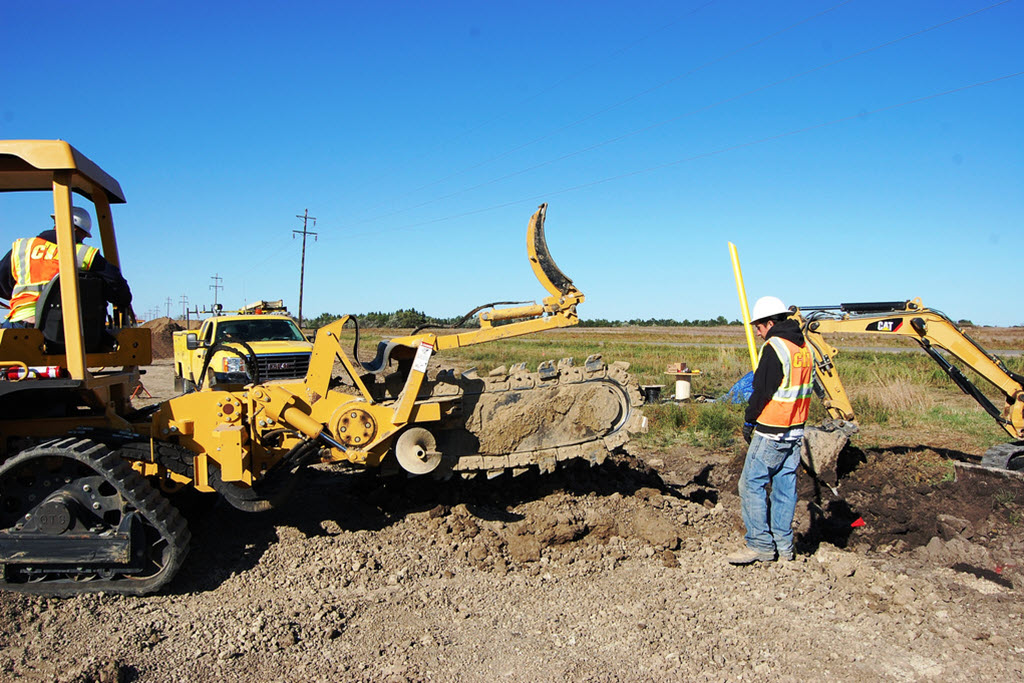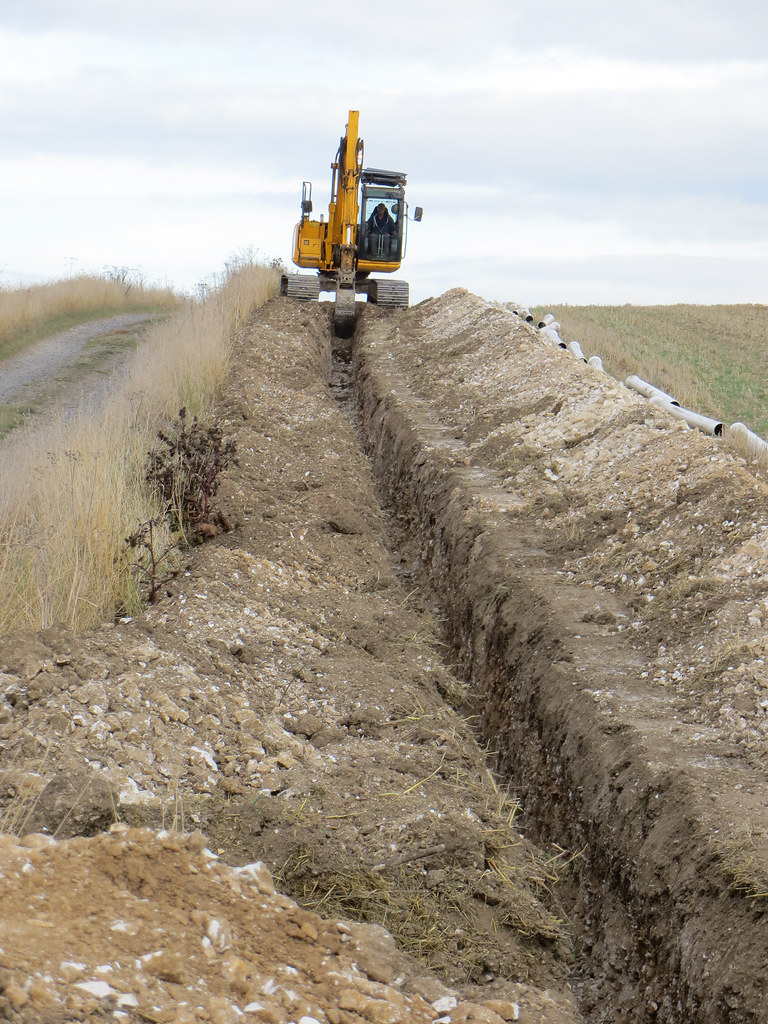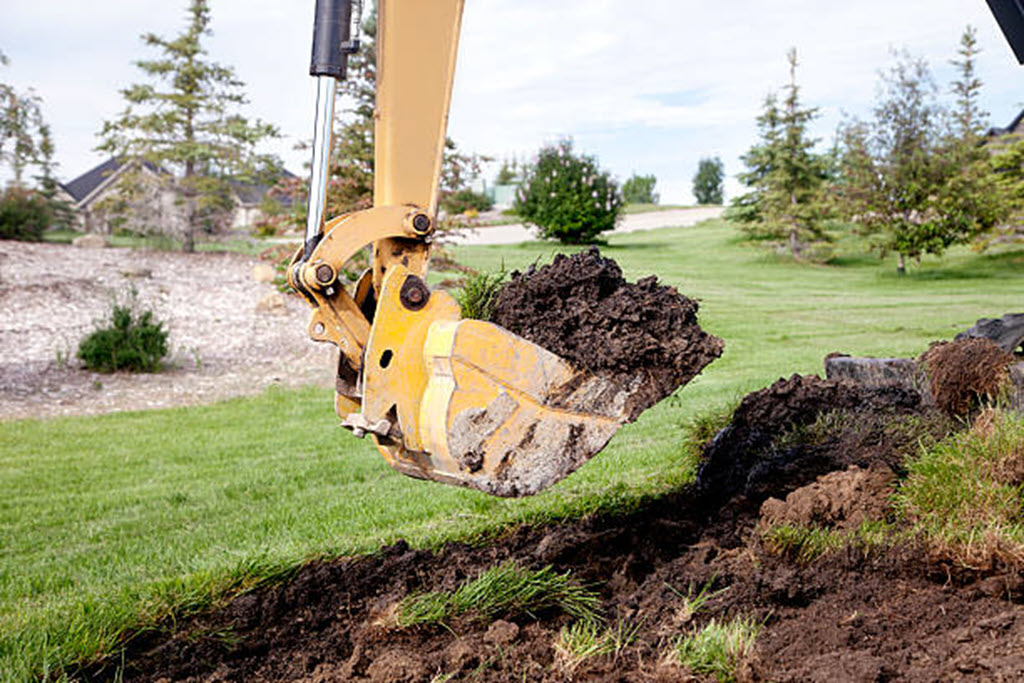Cable Trenchingsin Almont MI
Cable Trenching Done Right for Secure Utility Installations
We Are Locally Owned & Operated For Over 37 Years
Contact Us Today!
We Serve Businesses In And Around The Following Cities:
About Cable Trenchings
Introduction- The Importance of Cable Trenching in Almont
In the booming city of Almont, commercial properties constantly adapt to technology advancements and infrastructure development. One such imperative process that ensures these advancements run smoothly is Cable Trenching. The primary focus of this comprehensive guide is to elaborate on the importance and benefits of cable trenching while providing unique insights about its applications in the city’s commercial landscape.
For the uninitiated, cable trenching involves the creation of trenches or pathways through which cables for utilities like electricity, data transmission, and telecommunication are buried under the surface. It’s an integral part of the city’s infrastructural development and contributes to a secure, organized, and efficient setup.
The Process of Cable Trenching
To further enlighten you on the matter, it’s necessary to understand the intricacies of the process. Reliable trenching contractors, such as D&J Contracting, handle cable trenching in four main phases: planning, excavation, utility installation, and backfilling.
Planning is the initial step where blueprints are created, marking areas for trenching to ensure no existing underground utilities are disrupted. Digging follows, where trenching excavation companies apply different techniques depending on various factors like depth, soil conditions, and the subterranean environment. Once the trenches are prepared, utility line trenching comes into play where the cables are carefully laid and finally, the trenches are refilled with soil.
Benefits of Cable Trenching
Commercial properties in Almont greatly benefit from cable trenching. Let’s deconstruct the advantages that this process brings to the table.
Firstly, cable trenching helps in maintaining an organized infrastructure. With all cables neatly tucked away underground, the surface is free from clutter, enhancing property aesthetics, and reducing accidents caused by tripping over stray cables. Secondly, it protects cables from environmental damages, ensuring longevity and minimal disruptions in services. Thirdly, cable trenching makes maintenance checks and repairs way more manageable as it is easier to identify and fix issues when all cables are systematically placed.
One of the vivid examples of such benefits is the trenching for propane lines. Companies like D&J Contracting handle such work which greatly contributes to securing these vital cables against potential surface-level damages. This also proves beneficial over the long-term as it reduces the costs related to frequent repairs or replacements associated with surface-laid cables.
Real-World Applications of Cable Trenching
Evidence of cable trenching benefits is visible across commercial properties in Almont, and it’s worth discussing a few representative examples. For instance, businesses with expansive premises, like corporate parks or shopping complexes, employ trench digging services for secure and efficient cable distribution.
Real estate developers often collaborate with trenching and boring contractors to layout cables for electricity, data, or sewage lines during the initial construction phases. Even sectors like healthcare and hospitality, which operate sprawling facilities, require extensive cable trenching for their infrastructure.
Another example can be seen in public utility services where trenching for utilities ensures seamless power and telecommunications network distribution across the city. In fact, Almont’s efficient utility services can be attributed in part to effective cable trenching undertaken by reputed companies like D&J Contracting.
Choosing the Right Trenching Contractor
The selection of a trenching contractor is a crucial decision that impacts the quality and efficiency of cable installation. Several qualified trenching contractors near Almont can get the job done, but it is advisable to choose one that possesses know-how, experience, and a proven track record.
D&J Contracting stands out as a reliable choice with its extensive experience in cable trenching for various utilities in Almont’s commercial landscape. From detailed planning to careful execution, they ensure all aspects of trenching are handled with utmost precision and professionalism, making them an excellent pick when you require trench digging services.
Wrap up on Cable Trenching in Almont
Cable trenching plays an unseen, yet significant role in shaping Almont’s commercial infrastructure. It brings order, efficiency and resilience to a property’s utility setup, while fostering safety and aesthetic appeal. In a city that’s continually growing and adapting, embracing a well-planned and professionally executed process of cable installation and maintenance is a wise move to consider.
For those on the lookout for such services, the expertise of trench diggers and contractors like D&J Contracting aids in skilful execution of all trenching activities. Make an informed decision and invest in professional cable trenching services for your commercial properties in Almont to ensure an organized, secure, and efficient utility system.
Cable Trenchings Gallery


Call Us Today to receive your Free Quote for
Cable Trenching in Almont
Serving: Almont, Michigan

About Almont, Michigan
Almont was first settled in 1828 by James Deneen. It received a post office in 1835 named Bristol, for Oliver Bristol, the second permanent settler. The village was platted as Newburg in 1836, and renamed Almont in 1846.
According to HildaMae Bowman’s “Almont, The Tale of Then and Now,” Almont’s name was changed in 1845 to honor the Mexican general, Juan Almonte.
According to the United States Census Bureau, the village has a total area of 1.42 square miles (3.68 km), all land. The village center of Almont is located at the intersection of M-53 (also known as Van Dyke) and St. Clair Street. To the east, St. Clair is known as Almont Road, and to the west it is known as General Squire Road. In addition, this is also sometimes deemed as “40 Mile Road”, although the nearby ascending “mile roads” officially end at “37 Mile Road”. Nearby towns include Bruce Township and Romeo to the south; Dryden to the northwest; Imlay City to the north; and Allenton to the east, and Capac to the northeast. Almont is approximately 40 miles (64 km) north of Detroit.
| Census | Pop. | Note | %± |
|---|---|---|---|
| 1880 | 837 | — | |
| 1890 | 717 | −14.3% | |
| 1900 | 718 | 0.1% | |
| 1910 | 675 | −6.0% | |
| 1920 | 789 | 16.9% | |
| 1930 | 844 | 7.0% | |
| 1940 | 924 | 9.5% | |
| 1950 | 1,035 | 12.0% | |
| 1960 | 1,279 | 23.6% | |
| 1970 | 1,634 | 27.8% | |
| 1980 | 1,857 | 13.6% | |
| 1990 | 2,354 | 26.8% | |
| 2000 | 2,803 | 19.1% | |
| 2010 | 2,674 | −4.6% | |
| 2020 | 2,846 | 6.4% | |
| U.S. Decennial Census | |||
As of the census of 2010, there were 2,674 people, 1,030 households, and 728 families living in the village. The population density was 1,883.1 inhabitants per square mile (727.1/km). There were 1,116 housing units at an average density of 785.9 per square mile (303.4/km). The racial makeup of the village was 93.1% White, 0.3% African American, 0.3% Native American, 0.2% Asian, 4.9% from other races, and 1.1% from two or more races. Hispanic or Latino of any race were 7.4% of the population.
There were 1,030 households, of which 37.3% had children under the age of 18 living with them, 50.6% were married couples living together, 13.7% had a female householder with no husband present, 6.4% had a male householder with no wife present, and 29.3% were non-families. 25.9% of all households were made up of individuals, and 10.1% had someone living alone who was 65 years of age or older. The average household size was 2.60 and the average family size was 3.11.
The median age in the village was 37.2 years. 26.9% of residents were under the age of 18; 8.1% were between the ages of 18 and 24; 26.9% were from 25 to 44; 26.7% were from 45 to 64; and 11.4% were 65 years of age or older. The gender makeup of the village was 50.2% male and 49.8% female.
As of the census of 2000, there were 2,803 people, 1,022 households, and 747 families living in the village. The population density was 1,857.2 inhabitants per square mile (717.1/km). There were 1,058 housing units at an average density of 701.0 per square mile (270.7/km). The racial makeup of the village was 95.54% White, 0.32% African American, 0.54% Native American, 0.36% Asian, 2.32% from other races, and 0.93% from two or more races. Hispanic or Latino of any race were 4.14% of the population.
There were 1,022 households, out of which 39.9% had children under the age of 18 living with them, 58.6% were married couples living together, 11.0% had a female householder with no husband present, 26.9% were non-families. 23.0% of all households were made up of individuals, and 8.9% had someone living alone who was 65 years of age or older. The average household size was 2.73 and the average family size was 3.24.
In the village, the population was spread out, with 30.3% under the age of 18, 7.0% from 18 to 24, 33.7% from 25 to 44, 19.7% from 45 to 64, and 9.2% who were 65 years of age or older. The median age was 33 years. For every 100 females, there were 90.9 males. For every 100 females age 18 and over, there were 87.3 males.
The median income for a household in the village was $53,984, and the median income for a family was $63,261. Males had a median income of $50,644 versus $26,667 for females. The per capita income for the village was $21,252. About 4.2% of families and 5.6% of the population were below the poverty line, including 5.8% of those under age 18 and 8.2% of those age 65 or over.
Almont is a home rule village with a manager-council form of government. Per its charter the village charter provides for seven councilors elected. Four councilors are up for election every two years, with the top three vote-getters serve three terms while the fourth highest serves two year terms. The president and president pro tempore are selected from its members by the council. A village manager is appointed by the council.
The village is served by specialized governmental units, the Almont Community Schools and the Almont District Library.
Call Us Today to receive your Free Quote for
Cable Trenching in Almont
Related Services in Almont, Michigan
We Serve Businesses In The Following Zip Codes:
48007, 48015, 48021, 48026, 48035, 48036, 48038, 48042, 48043, 48044, 48045, 48046, 48047, 48048, 48050, 48051, 48066, 48071, 48080, 48081, 48082, 48083, 48084, 48085, 48088, 48089, 48090, 48091, 48092, 48093, 48098, 48099, 48225, 48230, 48236, 48310, 48311, 48312, 48313, 48314, 48315, 48316, 48317, 48318, 48397